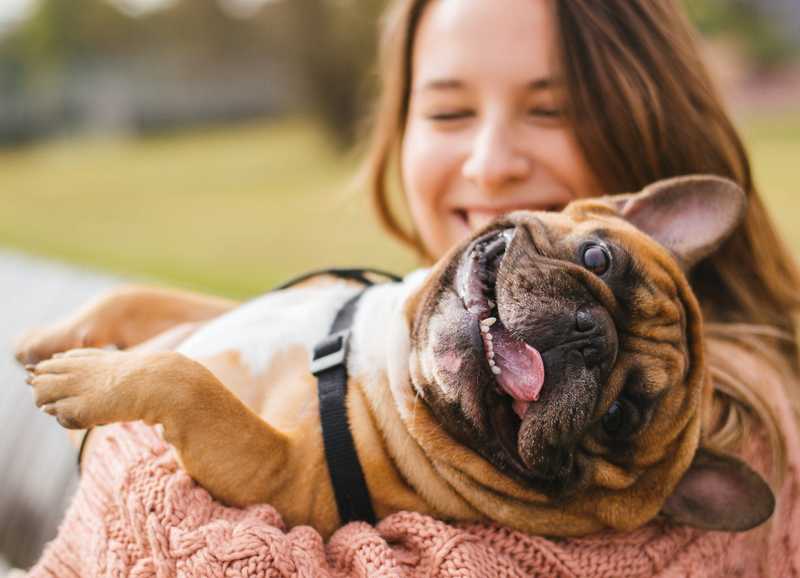A few years ago, the idea of giving your dog a little bit of cannabidiol (CBD) would’ve garnered a few laughs and raised eyebrows. These days, pet CBD products are all the rage—and there’s good reason: Many pet parents have found that this powerful cannabinoid can ease separation anxiety and pain, and even improve digestive health.
Given that CBD has similar effects in humans, its efficacy in pets comes as no surprise. And just like in humans, finding the right dose of CBD for your pet can be a challenge.
Most CBD pet products come with recommended dosages based on the animal’s body weight. And while it’s important to take the manufacturer’s suggestions into consideration, remember that just like humans, every pet is different.
Just Like Humans, Every Mammal Has Its Own Endocannabinoid Tone
Within all mammals is a network of receptors called the endocannabinoid system (ECS). CBD can influence this system to bring about a host of therapeutic effects and promote overall good health.
The ECS has many components:
- Cannabinoid receptors
- Endocannabinoids, which are substances made by the body that attach to cannabinoid receptors
- Enzymes, which breakdown endocannabinoids
Endocannabinoid tone is a term for the state of your ECS—it’s a reflection of how all of these components interact to bring about balance within the body. This tone also includes the levels of endocannabinoids in your body, the rate at which they’re made and broken down, as well as the density of ECS receptors in your brain.
The ECS works to keep your body in a balanced state, so when it falters, a whole host of problems can occur.
Low endocannabinoid tone is often associated with a lower pain threshold, as well as problems with:
- Mood
- Sleep
- Digestion
On the flip side, a high endocannabinoid tone tends to be related to conditions like obesity and diabetes.
Endocannabinoid tone doesn’t necessarily correlate with weight. This is why you should take a number of things into consideration when figuring out your pet’s CBD dose—especially if you’re not getting the results that you want with the suggested dosing on the package.
How Much CBD Should You Give Your Pet?
Most manufacturers of CBD pet products tend to recommend anywhere from 1–3 mg of CBD per pound of body weight as a baseline dosage. This isn’t wrong—remember there isn’t one correct answer at this point. But there are other factors that you should consider when trying to figure out your pet’s CBD dosage, like:
- The issue you’re trying to address
- Consumption method
These things can play a factor in how much CBD is best for your pet’s needs.
We’re still not sure what amounts of CBD are best for specific conditions, but research is currently underway. Studies have looked at CBD’s efficacy in dogs for conditions like:
These studies used high doses—closer to 1 mg of CBD per pound of body weight multiple times a day—which was much more than what’s normally recommended on product packaging. Though they were small, these randomized, double-blind trials showed that CBD could be effective in managing these conditions.
RELATED: 5 WAYS CBD CAN IMPROVE YOUR SENIOR PET’S LIFE
CBD Consumption Method Matters for Animals, Too
Pet parents should also consider how they’re giving their pet CBD. Generally, edibles, like treats, tend to have lower bioavailability than tinctures. Bioavailability describes the amount of CBD that’s available for the body to use.
In humans, edibles are thought to have a bioavailability of around 4–12% of the original dose of CBD, whereas tinctures have a bioavailability of around 50–75%.
If your pet prefers taking CBD in treat form and you’re not seeing much of an improvement in their condition, you may want to consider upping their dosage because of the low bioavailability of edibles.
Just like in humans, finding the right dose for your pet may take some time and will depend on their individual endocannabinoid tone as well as other factors. A Chihuahua with anxiety may need more CBD than a Great Dane who’s suffering from itchy skin.
Just like with people, the best way to figure out your pet’s dose is to start low and go slow. If you’re not noticing any improvements in your pet with the first initial doses of CBD, don’t be afraid to gradually increase the dose—despite the recommended dosing chart on the side of the package.
Photo credit: Branislav Nenin/Shutterstock.com
Want to try CBD, but don’t know where to start? Shop our selection of high-quality, lab-tested CBD products and have them shipped to your door. And if you have questions about CBD, ask them and our community will answer.
